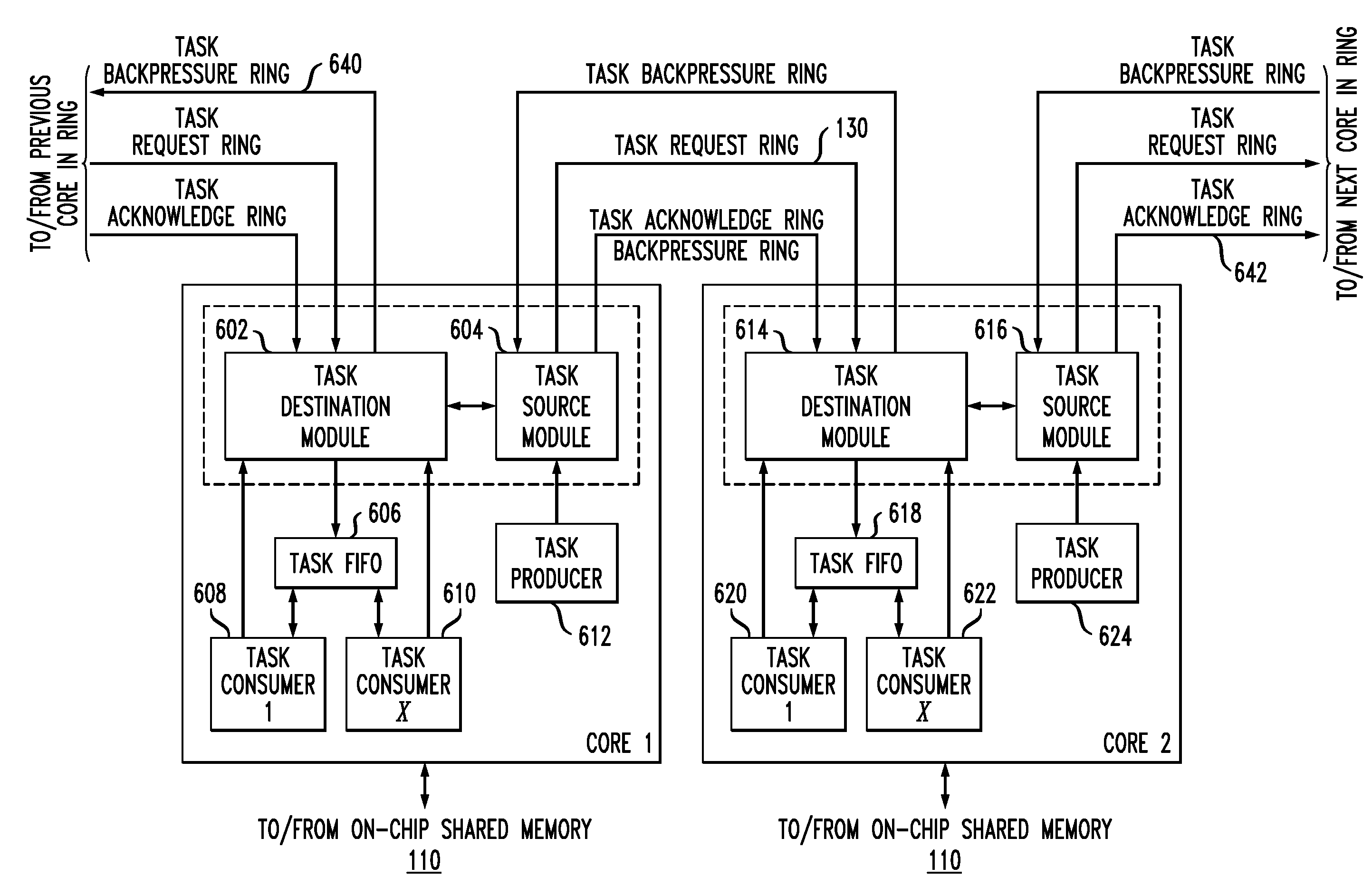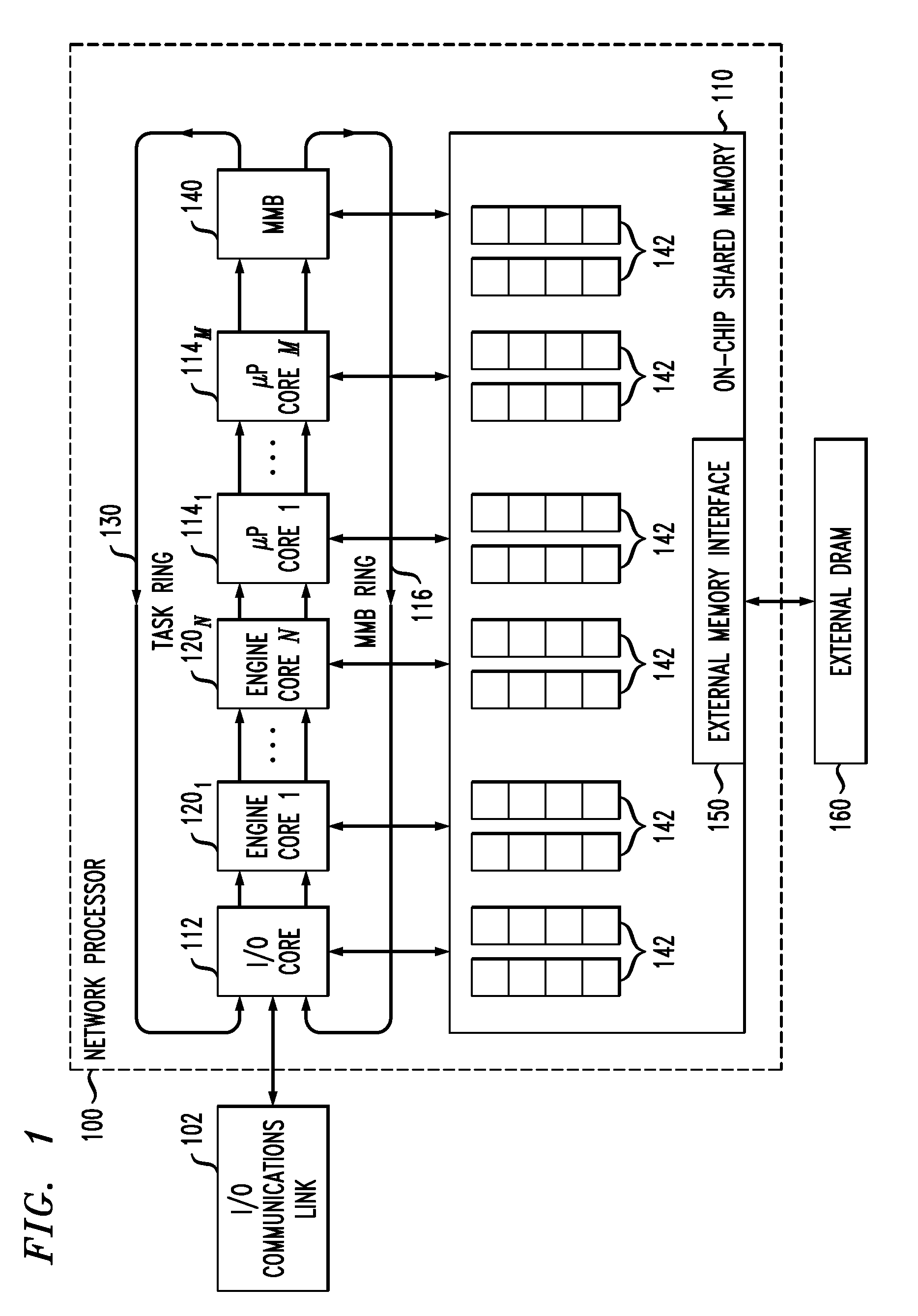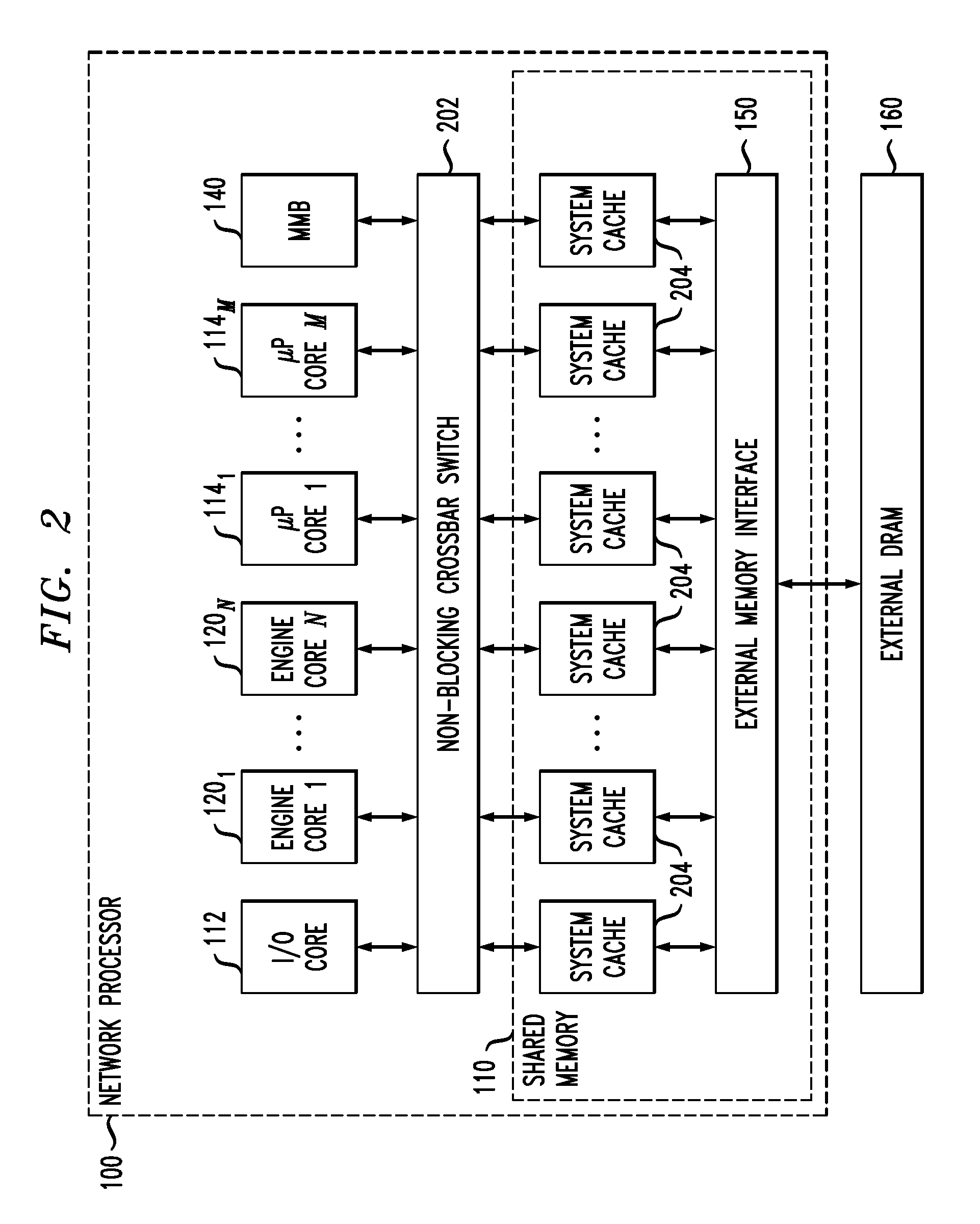Task queuing in a network communications processor architecture
a network communication and processor architecture technology, applied in the field of processor systems, can solve the problems of slow software-based approaches, reducing performance improvement, and increasing the number of general-purpose processors
- Summary
- Abstract
- Description
- Claims
- Application Information
AI Technical Summary
Benefits of technology
Problems solved by technology
Method used
Image
Examples
Embodiment Construction
[0023]In accordance with embodiments of the present invention a method of assigning tasks to queues of a processing core is provided. Tasks are assigned to a queue by sending, by a source processing core, a new task having a task identifier. A destination processing core receives the new task and determines whether another task having the same identifier exists in any of the queues corresponding to the destination processing core. If another task with the same identifier as the new task exists, the destination processing core assigns the new task to the queue containing a task with the same identifier as the new task. If no task with the same identifier as the new task exists in the queues, the destination processing core assigns the new task to the queue having the fewest tasks. The source processing core writes the new task to the assigned queue. The destination processing core executes the tasks in its queues.
[0024]Table 1 defines a list of acronyms employed throughout this speci...
PUM
 Login to View More
Login to View More Abstract
Description
Claims
Application Information
 Login to View More
Login to View More - R&D
- Intellectual Property
- Life Sciences
- Materials
- Tech Scout
- Unparalleled Data Quality
- Higher Quality Content
- 60% Fewer Hallucinations
Browse by: Latest US Patents, China's latest patents, Technical Efficacy Thesaurus, Application Domain, Technology Topic, Popular Technical Reports.
© 2025 PatSnap. All rights reserved.Legal|Privacy policy|Modern Slavery Act Transparency Statement|Sitemap|About US| Contact US: help@patsnap.com



